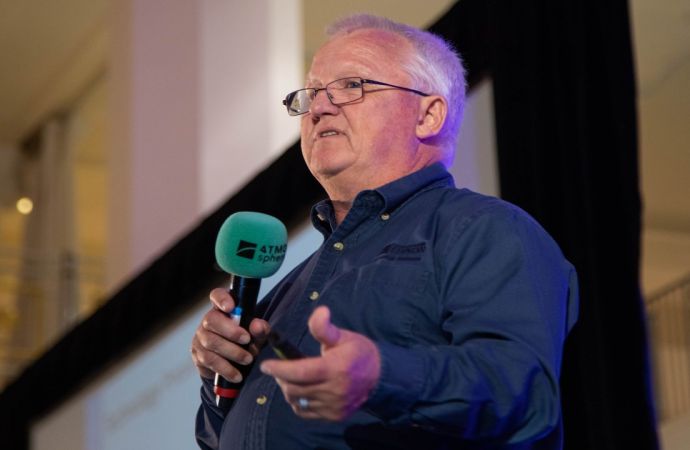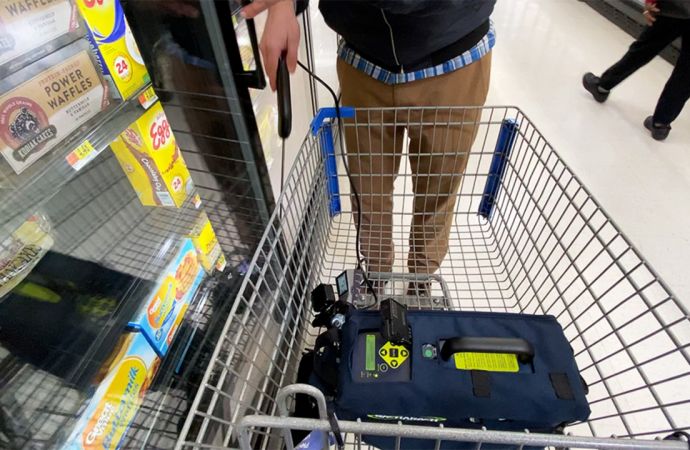NGO’s Janos Maté supports report’s conclusion that more research is needed on HFO’s environmental impact.

Solar symbol creeated by Greenpeace at Arc de Triomphe prior to the close of the Paris climate conference
Janos Maté, a senior consultant in the political business unit of Greenpeace, has been a campaigner for more environmentally friendly refrigerants since 1992. In 2010, he received the EPA Montreal Protocol Award for his work to protect the ozone layer and the climate.
He submitted the following response on behalf of Greenpeace to the Norwegian Environment Agency’s study on HFOs:
The Norwegian Environment Agency 2017 "Study on environmental and health effects of HFO refrigerants" is a welcomed addition to the much-needed discourse on HFOs. It underscores the necessity for further research regarding sustainability of HFOs. From a precautionary perspective such research should be conducted by independent bodies prior to governments authorizing the large-scale uptake of HFO refrigerants and other HFO products.
Who will pay the mitigation costs should the large- scale production of HFOs result in yet another global crisis?"
– Janos Maté, Greenpeace
The study’s key conclusions reflect some of the concerns that Greenpeace has been raising over the years:
* There is insufficient knowledge on the tolerable thresholds of TFA accumulation in the environment. What level of HFO use will result in catastrophic levels of TFA accumulation? What is the TFA accumulation tolerance level of nature?
The large-scale uptake of HFOs must be prevented until there is a full understanding of peak production levels of HFOs and other TFA- producing substances, and their long-term TFA contribution to the environment. If we wait till the harmful effects of TFA accumulation are fully manifested in the environment, it may be too late.
* The peak production and emissions levels of HFO refrigerants and other TFA-producing compounds are unknown. The Norwegian Environment Agency study focuses on HFO refrigerants. However, according to a 2015 Swedish Department of Energy paper, the most prominent HFO refrigerant, HFO-1234yf, is already marketed as an aerosol propellant. Governments have to date failed to set any production quotas on HFO products, even though from a precautionary perspective such quotas are warranted.
* Industry is creating HFO/HFCs blends, where the bulk of the blended compound (at least 60%), is HFC-32, with HFO-1234yf or HFO-1234ze being minor components. These blended compounds are marketed as HFOs, with their implied low-GWP rating. In actuality the GWP of HFO blends is relatively high compared to the GWPs of natural refrigerants. The GWP of most HFO blends range between 150 to 1800, while the GWP of natural refrigerants are 0 for ammonia, 1 for carbon dioxide, 5 for propane and less than 20 for isobutane.
* The chemical industry has a sorry track record with its CFC, HCFC and HFC fluorocarbon products. They have caused extensive environmental damage and endangered life on the planet.
While the chemical companies have earned massive profits from the sale of these products, and from the transition from one generation of fluorocarbons to the next, they have failed to contribute towards solving the global crises their products have caused. The costs of cleaning up have been left to the public purse.
Governments must not repeat this pattern. There is no credible reason for governments to accept at face value industry’s claims regarding the safety and technological benefits of HFOs. Who will pay the mitigation costs should the large- scale production of HFOs result in yet another global crisis?
Based on these concerns Greenpeace calls on governments to take the following measures:
* Set production quotas on HFOs so that industry is curtailed in its commercial aspirations for these products.
* Immediately ban the use of HFOs as aerosols.
* Require that industry commit to paying for all mitigating costs, through a liability contract, should the large-scale production of HFOs in the future result in severe damage to the environment.
* List HFOs in the Annex of Controlled Substances of the Kigali Amendment on HFCs. Including HFOs in the Annex will enable accurate accounting of the volume of HFOs being produced and consumed, the amount of TFA being released into the environment, and enable reporting and licensing to help prevent the illegal trade of HFCs mislabelled as HFOs.
* Greenpeace calls on governments to vigorously support the uptake of cooling technologies using natural substances by: enacting modern day standards and policies that reflect the current state of technology; providing financial incentives to encourage their further development and rapid uptake; and applying governmental purchasing powers towards cooling technologies that use natural refrigerants or other cooling methodologies that avoid the reliance on fluorocarbons.
Related stories



